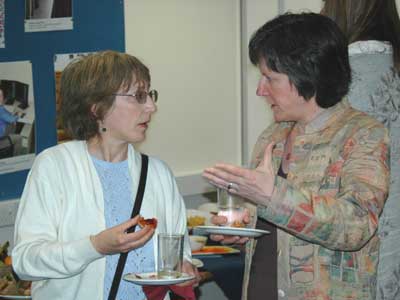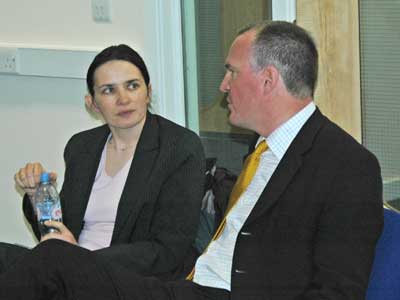Elaine Seymour Seminar, Oxford Brookes, 18 May 2006
 'Benefits and costs of undergraduate research for students and faculty: selected findings from a US study’ by Elaine Seymour, Director of Ethnography and Evaluation Research, Center to Advance Research and Teaching in the Social Sciences, University of Colorado, Boulder.
'Benefits and costs of undergraduate research for students and faculty: selected findings from a US study’ by Elaine Seymour, Director of Ethnography and Evaluation Research, Center to Advance Research and Teaching in the Social Sciences, University of Colorado, Boulder.
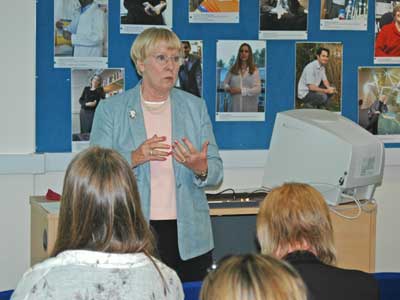
Elaine Seymour
Brief summary of Elaine Seymour's presentation
The presentation was based on research reported in:
Seymour E, Hunter A-B, Laursen S and DeAntoni T (2004) Establishing the benefits of research experiences for undergraduates in the sciences: First findings from a three-year study, Science Education 88, 493-534
Hunter A-B, Laursen S and Seymour E (2006) “Becoming a scientist”: The role of undergraduate research in students’ cognitive, personal and professional development, Science Education, forthcoming
The opening remarks of the presentation included the observation that undergraduate research in the US is not new but efforts to find its benefits are new. Using the results from 17 (mainly US) evaluation studies that meet accepted methodological standards, a number of benefits of scientific undergraduate research were identified and these fell into the following groups:
- Thinking and working like a scientist
- Becoming a scientist
- Skills
- Personal-professional gains
- Career clarification
- Enhanced career preparation
The driving force behind these kinds of evaluation studies is US fearfulness of losing its world position in scientific research. It is therefore considered important to bring on the next generation of researchers by reinforcing research at the undergraduate level.
It is critical that undergraduate research is authentic and real and that students learn how science is done and how results are reported through papers, conferences and posters. Three models of undergraduate research were identified:
- A research-embedded curriculum
- The final year dissertation
- Apprentice researchers working mainly in the summer vacation
The third of the above models was the subject of the evaluation study being presented. The summer vacation research was undertaken by student apprentice-researchers between their third and fourth years. In-depth interviews were held both with the students themselves and with staff. The interviews were unstructured and resembled a conversation with the transcripts supplying narrative, mainly in the form of stories. The narrative was coded and the codes were grouped into themes and frequency counts taken. The results of the frequency counts were presented as a series of tables and, though staff and students reported similar gains, there were differences of emphasis. In particular, students were more positive about the research skills they thought they had acquired.
In conclusion, it was mentioned that it would be useful to also evaluate the results of other kinds of interventions that might achieve some of the same educational results, for instance work placements, travel and exchanges.
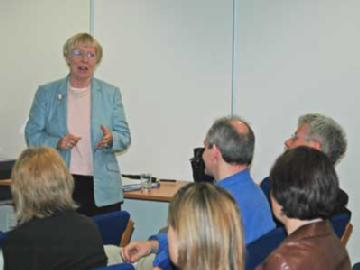
Elaine Seymour
The method used in Seymour’s evaluation clearly displays a number of extremely useful features that could be employed in the evaluation of any intervention involving student research:
- Both students and staff involved in the initiative should make contributions to the evaluation
- If the contributions of those involved are made in a similar fashion, then this facilitates useful comparisons between different groups
- From a range of studies a standard checklist is emerging of gains that can be looked for in the evaluation of undergraduate research
- If a standard list of gains is employed, then it is possible to benchmark the evaluation of different kinds of intervention both within and between institutions
- The in-depth interview represents a tried and tested approach to acquiring evaluation data from both students and staff
- The coding and categorising of interview transcripts represents a tried and tested approach to the analysis of interview transcripts
Together with materials from other sources, it would be possible to incorporate the Seymour method in a manual of instruments and approaches that could be used to evaluate the student learning experience of a clear intervention in their undergraduate education.
Pete Smith, Reinvention Centre Academic Co-ordinator, Oxford Brookes
May 2006
|
|
|
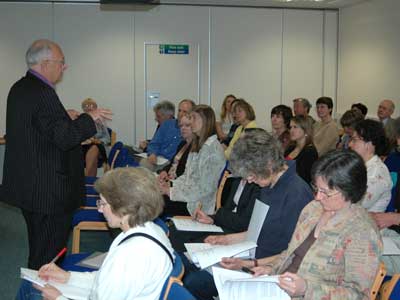
Alan Jenkins, Reinvention Fellow

